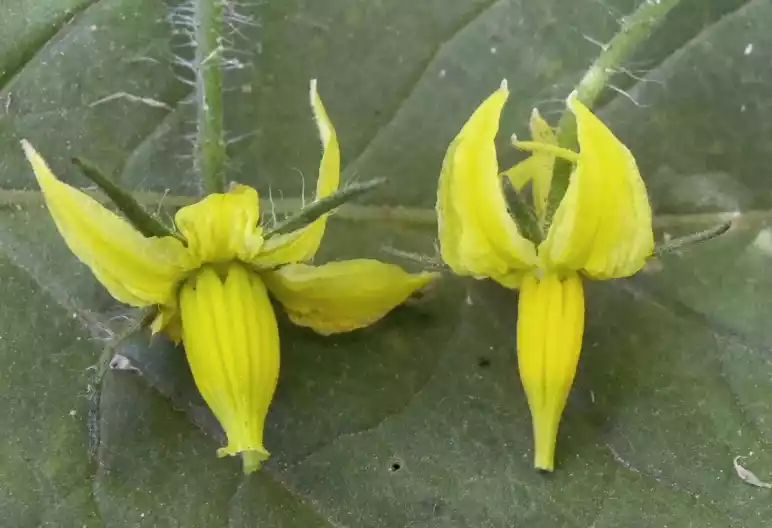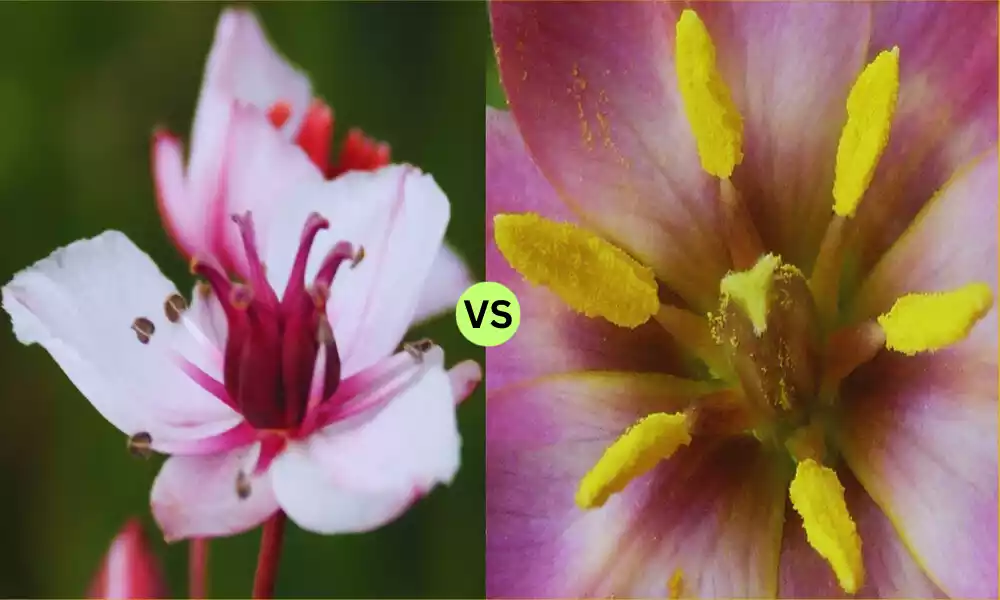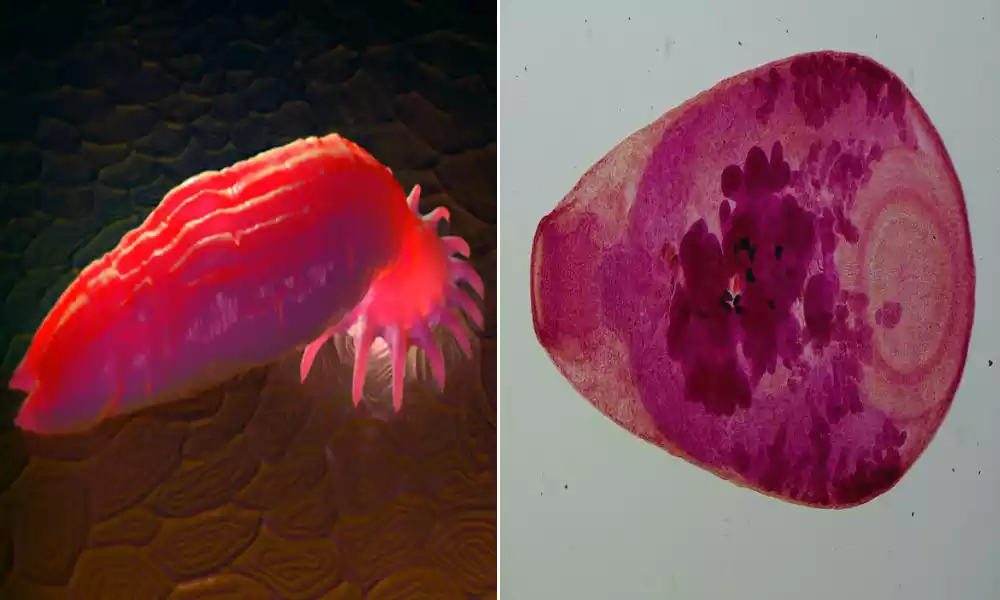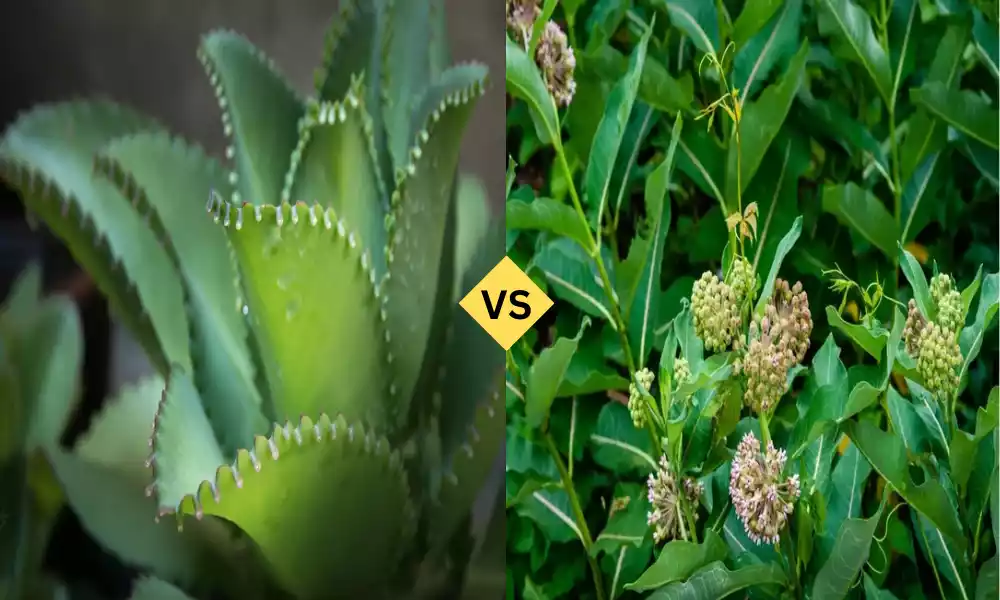Apocarpous and Syncarpous are terms used in botany to describe the arrangement of carpels in the gynoecium of flowering plants. In an apocarpous gynoecium, the carpels are free from one another, with each carpel forming an independent pistil. These independent carpels do not fuse together, resulting in multiple separate ovaries in a single flower. On the other hand, in a syncarpous gynoecium, the carpels are fused together, forming a single compound pistil with one or more chambers, or locules.
This fusion leads to a single ovary formed from multiple carpels. The distinction between apocarpous and syncarpous arrangements plays a crucial role in understanding floral morphology and plant taxonomy.
Definition of Apocarpous
Apocarpous refers to a type of gynoecium in flowering plants where the carpels are free and distinct from one another. In an apocarpous flower, each carpel forms an independent pistil and is not fused with other carpels, resulting in multiple separate ovaries within the same flower. This characteristic can be contrasted with syncarpous gynoecium, where the carpels are fused together to form a single compound pistil.

Features of Apocarpous Flowers
Apocarpous flowers possess specific morphological features related to their gynoecium. Here are some of the notable features of apocarpous flowers:
- Separate Carpels: The primary characteristic of apocarpous flowers is the presence of distinct and free carpels in the gynoecium, which means they are not fused together.
- Multiple Independent Pistils: Each free carpel can develop into an independent pistil, which consists of an ovary, style, and stigma.
- Multiple Ovaries: Each carpel forms its own ovary, leading to multiple separate ovaries within the same flower.
- Individual Chambers (locules): As each carpel is distinct, each will have its own chamber or locule that contains one or more ovules.
- Fruit Formation: Upon fertilization, apocarpous flowers can produce multiple individual fruits or sometimes a collective fruit with distinct sections or fruitlets.
- Varied Positioning: The positioning of the separate carpels can vary. They might be spread out, or they could be clustered together.
- Presence in Primitive Flowers: Apocarpous condition is considered more primitive compared to the syncarpous condition. As such, many early-diverging plant lineages, like magnolias, exhibit this characteristic.
- Distinct Styles and Stigmas: Since the carpels are separate, each can have its own style and stigma, leading to multiple styles and stigmas in the flower.
Examples of plants with apocarpous flowers include the buttercup (Ranunculus) and magnolia.
Remember, the presence of an apocarpous gynoecium is just one characteristic of a flower, and other floral parts like petals, sepals, and stamens can vary widely among apocarpous species.
Benefits of Being Apocarpous
Being apocarpous offers a number of potential benefits to plants. These benefits primarily relate to reproductive flexibility, adaptability, and evolutionary considerations:
- Increased Fertility Chances: Multiple separate carpels can increase the chances of at least some ovules getting fertilized, especially if pollination is inconsistent or inefficient. If one carpel fails to get fertilized, others might succeed.
- Reduced Competition: Separate ovaries mean that developing seeds within one ovary are less likely to compete with those in another ovary for resources, as might be the case in a single, multi-chambered ovary.
- Adaptability: Independent carpels can lead to the production of fruits with diverse characteristics, even within the same flower. This can be advantageous in uncertain environments where it’s beneficial to “bet” on multiple strategies.
- Dispersal Advantages: Multiple fruits or fruitlets produced from separate carpels can lead to varied seed dispersal mechanisms, increasing the chances of successful seed spread.
- Reduction of Pathogen Impact: If a disease or pathogen affects one carpel, the distinct and separate nature of other carpels might prevent or reduce the spread of the disease, thereby ensuring that at least some seeds develop healthily.
- Increased Genetic Diversity: In some apocarpous species, cross-pollination might lead to each carpel being fertilized by pollen from different sources. This can increase genetic diversity within the offspring from a single flower.
- Evolutionary Flexibility: The apocarpous condition, being considered more primitive, has served as a foundational structure from which many diverse evolutionary pathways have branched. This structural simplicity can offer more avenues for evolutionary innovations and adaptations.
While being apocarpous provides certain advantages, it’s important to note that the evolutionary success of a plant species is the result of a complex interplay of various morphological, ecological, and genetic factors. The choice between apocarpous and syncarpous isn’t necessarily about one being universally better than the other, but rather what works best for a particular species in its specific environment and ecological niche.
Definition of Syncarpous
Syncarpous refers to a type of gynoecium in flowering plants where the carpels are fused together. In a syncarpous flower, the carpels are united to form a single compound pistil with one or more chambers, or locules. This characteristic results in a single ovary formed from the fusion of multiple carpels. The syncarpous arrangement is in contrast to the apocarpous gynoecium, where the carpels remain free and distinct from one another.

Characteristics of Syncarpous Flowers
Syncarpous flowers exhibit specific features related to the fusion of their carpels in the gynoecium. Here are some prominent characteristics of syncarpous flowers:
- Fused Carpels: The defining feature of syncarpous flowers is the presence of carpels that are fused together within the gynoecium.
- Single Compound Pistil: Despite having multiple carpels, the fusion results in the formation of a single, compound pistil.
- Single Ovary: The fusion of carpels leads to the formation of a single ovary, which may have one or more chambers or locules.
- Multiple Chambers (Locules): Depending on the number of carpels and the degree of their fusion, the ovary can have multiple chambers. Each chamber contains one or more ovules.
- Single Fruit Formation: Upon fertilization, syncarpous flowers typically produce a single fruit which may contain multiple seeds from the united ovary.
- Unified Style and Stigma: In many syncarpous flowers, there’s often a single style leading to a single stigma. However, in some cases, there might be multiple styles or a branched style leading to multiple stigmatic surfaces.
- Complex Ovule Arrangement: Depending on the species and the number of carpels, the ovules’ arrangement inside the ovary can vary widely, from a single row to multiple rows or layers.
- Presence in Advanced Flowers: The syncarpous condition is seen in many evolutionarily advanced plant lineages. As such, many eudicots and monocots exhibit this characteristic.
Examples of plants with syncarpous flowers include roses, tomatoes, and apples.
While the gynoecium’s condition (whether apocarpous or syncarpous) provides valuable taxonomic information, other flower parts like petals, sepals, and stamens can also play crucial roles in the classification and identification of plant species.
Benefits of Being Syncarpous
Being syncarpous, where the carpels are fused together in a flower, offers a variety of advantages to plants, both from reproductive and ecological perspectives:
- Structural Integrity: Fused carpels can provide a stronger and more robust structure for the developing ovules and seeds, offering better protection against physical damages and potential herbivores.
- Efficient Pollination: With a unified structure, the transfer of pollen might be more straightforward, leading to more consistent pollination and fertilization.
- Coordinated Development: A single compound ovary can ensure coordinated development of seeds, ensuring uniform ripening and dispersal.
- Specialized Fruit Types: Syncarpous gynoecium can lead to the evolution of a diverse array of fruit types tailored to specific dispersal agents or strategies, such as fleshy fruits for animal dispersal or winged fruits for wind dispersal.
- Greater Seed Protection: A single, larger ovary might offer better protection against pests and diseases, compared to multiple smaller ovaries.
- Resource Consolidation: The fusion of carpels may lead to more efficient allocation and usage of resources for seed development.
- Enhanced Seed Dispersal: Syncarpous flowers can lead to the development of larger fruits, which may be more attractive to certain seed dispersers, enhancing the chances of seed spread.
- Reproductive Efficiency: In some environments or ecological niches, producing a large number of seeds in a single fruit might be more advantageous than producing multiple fruits, especially in terms of energy and resource allocation.
- Adaptability to Specific Pollinators: A unified pistil structure can evolve in tandem with specific pollinators, ensuring efficient pollination. For instance, some syncarpous flowers might be adapted to a particular bird or insect type.
- Evolutive Trend: The syncarpous condition is seen in many advanced plant groups, suggesting that, in some evolutionary contexts, it offers competitive advantages.
While the syncarpous condition provides certain benefits, it’s essential to recognize that the evolutionary choice between being apocarpous and syncarpous is influenced by a myriad of ecological, evolutionary, and environmental factors. What might be advantageous in one context or environment might not be in another. The success of a plant species is determined by the collective interplay of these factors.
Comparison table of Apocarpous and Syncarpous
Here’s a comparison table of Apocarpous and Syncarpous:
| Feature | Apocarpous | Syncarpous |
|---|---|---|
| Definition | Gynoecium with carpels that are free and distinct from one another. | Gynoecium where the carpels are fused together. |
| Number of Pistils | Multiple independent pistils. | Single compound pistil. |
| Ovaries | Multiple separate ovaries in one flower. | Single ovary formed from the fusion of carpels. |
| Chambers (locules) | Each carpel has its own chamber. | One or more chambers within the single ovary. |
| Fruit Formation | Produces multiple individual fruits or a collective fruit with distinct sections. | Produces a single fruit, often with multiple seeds from the united ovary. |
| Examples | Ranunculus, Magnolia | Tomato, Rose, Apple |
This is a basic comparison and the presence of either type can vary depending on the species and family of the flowering plants.
What are the similarities between Apocarpous and Syncarpous?
Both apocarpous and syncarpous configurations relate to the gynoecium of a flower, which is the female reproductive part. Despite their differences, they share several similarities:
-
- Reproductive Role: Both configurations pertain to the female reproductive structures of flowers and play essential roles in sexual reproduction and seed formation.
- Presence of Carpels: Whether fused (syncarpous) or separate (apocarpous), carpels are the basic units in both configurations.
- Ovule Containment: Both arrangements house ovules, which upon fertilization, develop into seeds.
- Stigma and Style: Regardless of whether the carpels are fused or separate, they will typically have stigmas and styles associated with them, facilitating the capture and transport of pollen grains.
- Fruit Formation: In both cases, the mature ovaries develop into fruits, which help in protecting the seeds and aiding in their dispersal.
- Potential for Cross-Pollination: Both apocarpous and syncarpous flowers can be cross-pollinated, depending on the species and the presence or absence of other flower parts.
- Genetic Outcomes: Both configurations lead to seeds that carry genetic material from both parents (assuming cross-pollination occurs), leading to genetic diversity in the next generation.
- Presence Across Angiosperms: Both apocarpous and syncarpous gynoecia are found in various angiosperm families, showcasing the diversity and adaptability of flowering plants.
While the structural arrangements of carpels in apocarpous and syncarpous flowers differ, their fundamental biological functions and roles in plant reproduction remain consistent.
Practical Implications in Botany
The distinction between apocarpous and syncarpous gynoecia has practical implications in botany, particularly in the fields of taxonomy, plant breeding, ecology, and horticulture. Here are some practical implications based on the carpel arrangement in flowers:
- Taxonomy and Classification:
- The arrangement of carpels is a vital morphological feature used in the classification and identification of plant species, genera, and families.
- It provides insights into evolutionary relationships among plant groups, helping in phylogenetic studies.
- Plant Breeding:
- Understanding the carpel arrangement is essential when planning hybridization, as it influences the ease of cross-pollination and seed development.
- In syncarpous flowers, for instance, multiple ovules are present in a single ovary, which might be targeted for producing multiple hybrid seeds in one cross.
- Ecology:
- The carpel arrangement, and the resultant fruit type, can influence seed dispersal mechanisms, which in turn affects plant distribution and colonization strategies.
- It can also influence plant-pollinator interactions. Some pollinators might prefer or are adapted to specific gynoecium types.
- Horticulture:
- In ornamental plant breeding and cultivation, understanding the carpel structure can be critical for developing desired flower and fruit morphologies.
- The carpel arrangement might influence decisions related to grafting, propagation, and cultivation practices.
- Economic Botany:
- Some economically important products, like fruits, are directly derived from the ovary. The carpel arrangement influences the fruit’s nature, which has implications for crop yield, processing, and market value.
- In medicinal plants, the carpel structure can influence the concentration of certain compounds or active ingredients.
- Conservation:
- Knowledge of reproductive structures, including carpel arrangement, can guide conservation efforts. For instance, understanding how a specific plant reproduces can inform strategies for its conservation or restoration.
- Education:
- The distinction between apocarpous and syncarpous is fundamental in botanical education, helping students understand plant morphology, evolution, and reproductive strategies.
In practical botany, understanding these intricacies of plant reproductive structures aids in making informed decisions, whether it’s in the realm of research, cultivation, or conservation.
How to Identify Apocarpous and Syncarpous Flowers in the Wild
Identifying whether a flower is apocarpous or syncarpous in the wild requires a close examination of the flower’s reproductive structures, specifically the gynoecium (the female part of the flower). Here’s a step-by-step guide to help you differentiate between the two:
- Collect Necessary Tools:
- A hand lens or magnifying glass can be very helpful for closely observing the floral structures.
- Tweezers or a fine probe can be used to dissect the flower if needed.
- Select a Mature Flower:
- It’s easier to observe the gynoecium in a mature flower. If possible, choose one that’s fully open.
- Locate the Gynoecium:
- In the center of most flowers, you’ll find the female reproductive parts. These may be surrounded by male reproductive parts (stamens) and then by petals and sepals outwardly.
- Observe the Pistils:
- The pistil is composed of the ovary (bottom), style (middle), and stigma (top).
- Identify Apocarpous Flowers:
- Look for multiple separate pistils within the same flower. Each of these pistils will have its own ovary, style, and stigma.
- The ovaries will not be fused together but will be distinct.
- If you can count multiple separate ovaries, you’re likely looking at an apocarpous flower.
- Identify Syncarpous Flowers:
- Look for a single compound pistil. Even if the flower originally had multiple carpels, they will be fused into a single structure.
- The single ovary may have multiple chambers or locules inside. However, without dissecting the ovary, you may not be able to observe the chambers.
- The style might be singular or branched, leading up to one or multiple stigmatic surfaces.
- Dissect for Clarity:
- If you’re still unsure, you can gently dissect the flower, removing the petals and stamens, to get a clearer view of the gynoecium. This can be especially helpful to determine the number of chambers inside an ovary in potential syncarpous flowers.
- Reference & Experience:
- A field guide or botanical reference book tailored for your region can be invaluable. It can provide illustrations and descriptions to guide your identification process.
- With experience, you’ll begin to recognize certain families or genera of plants that are typically apocarpous or syncarpous.
While examining wild flowers, it’s essential to respect nature. Avoid damaging or over-collecting plants, especially if they are rare or endangered. Observing and identifying should be done in a way that minimizes harm to the natural environment.
Conclusion
Apocarpous and syncarpous terms refer to the arrangement of carpels within the gynoecium of a flower. In apocarpous flowers, the carpels remain distinct and separate, each forming its own ovary, style, and stigma. This often leads to multiple, individual fruits or fruitlets from a single flower. Conversely, syncarpous flowers possess carpels that are fused together, resulting in a single compound ovary, which may contain multiple chambers or locules.
This condition typically leads to the formation of a single fruit. Both configurations have evolved in response to various ecological, evolutionary, and environmental pressures, offering distinct reproductive advantages to plants based on their specific habitats and pollination strategies.































